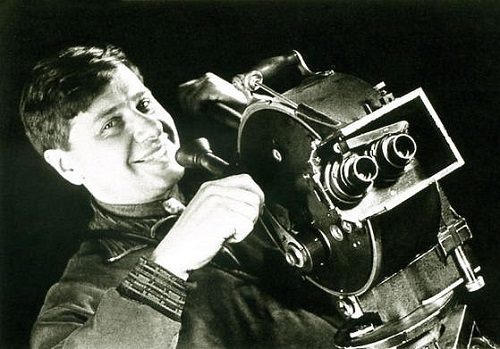Soviet political cartoonist Boris Yefimov

Against cold war. Let ice be this kind between us. Soviet political cartoonist Boris Yefimov (28 September 1900 – October 1, 2008)
Soviet political cartoonist Boris Yefimov (28 September 1900 – October 1, 2008) – People’s Artist of the USSR (1967), Hero of Socialist Labor (1990), laureate of the State Prize (1950, 1951). Boris Yefimov was always an interesting personality. World-renowned cartoonist, who was friends with Mayakovsky and Trotsky, saw Nicholas II, had talks with Stalin, and was Hitler’s personal enemy. Boris Yefimov, having all imaginable awards and titles, created during his long life (108 years), more than 40 thousand cartoons. Along with Deni, D.S.Moor, L.G.Brodaty, MM Cheremnykh, and Kukryniksy he has created a unique phenomenon in world culture – “positive satire”. September 28, 2007, on his 107th birthday, he was appointed chief artist of the newspaper “Izvestia”, and at the age of 107 continued work. He wrote his memoirs and drew caricatures, took an active part in public life, speaking at all sorts of memorabilia and commemorative meetings, parties and other events. Boris Efimov died on October 1st, 2008 in Moscow at the 109-year of life and was buried in the Novodevichy cemetery columbarium.
Boris Yefimov was born in the late nineteenth century and after 95 days entered in the age of twenty. Already in 5-6 years of age, he tried to draw various funny situations around him and from life. And when his parents moved to Belostok (then still Russian city), he went to a real school, where in duo with his brother made a handwritten journal, was responsible for illustrative part.
With the onset of World War I Belostok ceased to be calm city: the streets were torn by superpower bombs, one of which almost killed the elder brother of Yefimov – later known to the entire Union of journalist Mikhail Koltsov. Family parted: Koltsov went to study in Petrograd, the parents moved to Kiev, Boris chose Kharkov, where he enrolled in the fifth grade. He read the press with interest and once tried to draw some cartoons on political figures of the time.
Koltsov, have already mastered in Petrograd journalism, immediately added a caricature of the chairman of the State Duma Rodzianko in the popular magazine “The Sun of Russia”. So, 16 year-old Yefimov became a cartoonist. Since then, he began to draw for “The Spectator” periodicals, “Kommunar”, “Red Army”, “Bolshevik” and many others, gradually going to the genre of political caricature. In 1922, did not finish his studies at the Kiev Institute of National Economy, Boris, after his brother, moved to Moscow to stay there forever.
On arrival in Moscow cartoonist immediately joined the newspaper life – his works were published in the “Working paper”, “Crocodile”, “Pravda”, “Izvestia”, “Ogonyok”, “Projector”, released in the form of collections … And in the middle of 1930s Yefimov’s happened to be in Berlin. And so it happened that in the street he was able to see Adolf Hitler and his entourage. Later, during the war, when the cartoon image of the Fuhrer’s swastika under his nose firmly settled in the Soviet press, and leaflets with his image began to throw behind the front line, Hitler included Yefimov into the special list of personal enemies – marked “to find and hang up.”
After the arrest of Mikhail Koltsov at the end of 1938 the artist was fired from the newspaper “Izvestia”, and engaged in illustrating works of Saltykov-Shchedrin. In 1940, under the pseudonym V. Borisov, he returned to political caricature, and after specifying of Vyacheslav Molotov was again included in the team of the Soviet masters of political caricature, with the resumption of publication in “Pravda”, “Crocodile”, “propaganda posters” and other publications.
In 1949, on the day of the 10,000-th number of “Izvestia”, Yefimov once again didn’t find himself on the list of the recipients and employees, angry, wrote a letter to Stalin in which he asked to deal with the error. However, immediately regretted it. But Stalin suddenly showed generosity – he did not waste time on trifles, and soon instead of the Order the cartoonist was awarded Stalin Prize.
Yefimov happened to write letters not only to Stalin. For example, on the eve of the 100th anniversary, he congratulated the Queen of England. And even received a reply.
Soviet political cartoonist Boris Yefimov

Capitalist in the photo studio is offered to select the image in which he will be shot – humane, economic, democratic





























